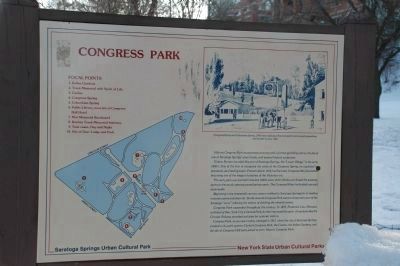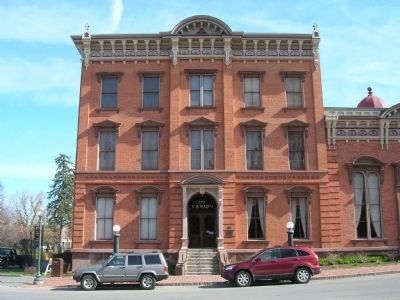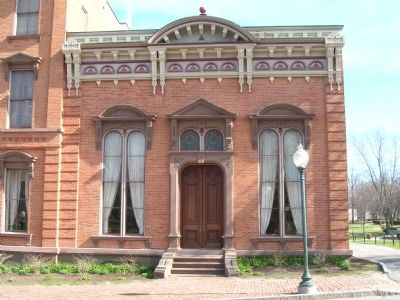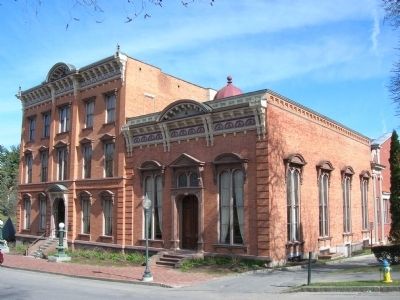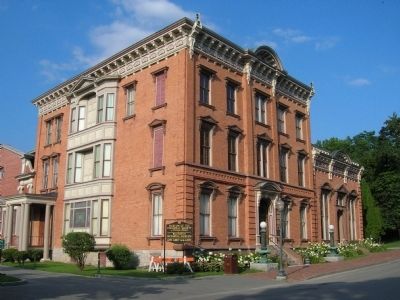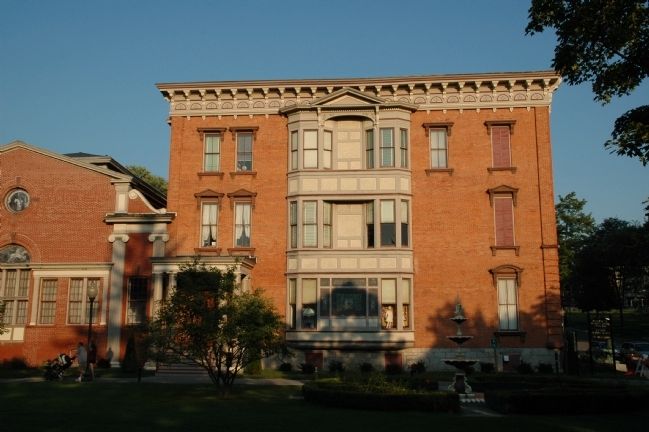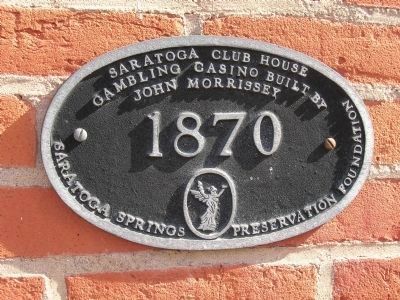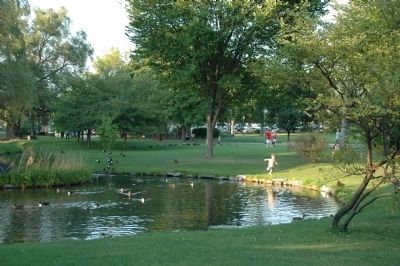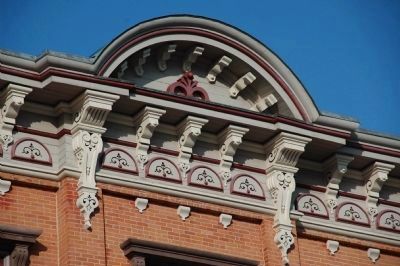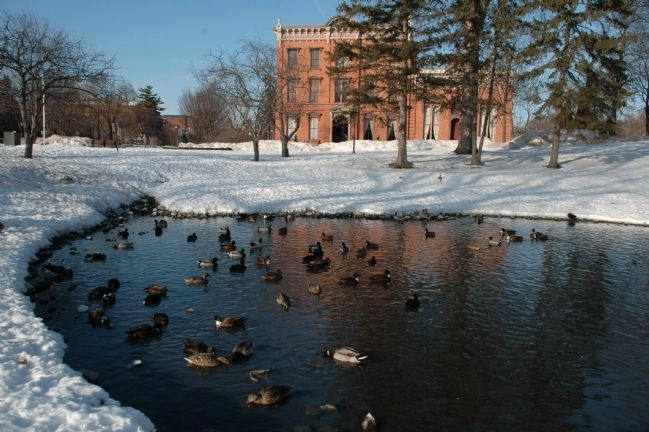Saratoga Springs in Saratoga County, New York — The American Northeast (Mid-Atlantic)
Congress Park
Historic Congress Park incorporates an early park, a former gambling casino, the site of one of Saratoga Springs’ great hotels, and several historic sculptures.
Gideon Putnam founded this part of Saratoga Springs, the “Lower Village,” in the early 1800’s. One of the first to recognize the value of the Congress Spring, he exploited its popularity as a healing water. Putnam died in 1812, but his hotel, Congress Hall, flourished, becoming one of the elegant hostelries of the Victorian era.
The early park was formed in the late 1820’s when John Clarke purchased the swampy spring to the south, opening a small private park. The Congress Water he bottled was sold nationwide.
Beginning in the nineteenth century visitors trekked to Saratoga Springs for its healing mineral waters and clean air. Strolls around Congress Park were an important part of the Saratoga “cure,” relieving the tedium of drinking the mineral waters.
Congress Park expanded throughout the century. In 1875, Frederick Law Olmsted, architect of New York City’s Central Park, further improved this park. Attractions like the Circular Railway provided activities for summer visitors.
Congress Park, as you see it today emerged in 1913 when the city of Saratoga Springs created a city park system; Clarke’s Congress Park, the Casino, the Italian Gardens, and the site of Congress Hall were joined to form Historic Congress Park.
Focal Points
1. Italian Gardens
2. Trask Memorial with Spirit of Life
3. Casino
4. Congress Spring
5. Columbian Spring
6. Public Library, near site of Congress Hall Hotel
7. War Memorial Bandstand
8. Katrina Trask Memorial Stairway
9. Twin vases, Day and Night
10. Site of Deer Lodge and Park
Erected by Saratoga Springs Urban Cultural Park, New York State Urban Cultural Parks.
Topics and series. This historical marker is listed in these topic lists: Entertainment • Man-Made Features. In addition, it is included in the National Historic Landmarks series list. A significant historical year for this entry is 1812.
Location. 43° 4.692′ N, 73° 47.101′ W. Marker is in Saratoga Springs, New York, in Saratoga County. Marker is on East Congress Street east of Broadway Avenue (U.S. 9), on the right when traveling east. Touch for map. Marker is at or near this postal address: 1 East Congress Street, Saratoga Springs NY 12866, United States of America. Touch for directions.
Other nearby markers. At least 8 other markers are within walking distance of this marker. Congress Spring (within shouting distance of this marker); These Gates (within shouting distance of this marker); Columbian Spring (within shouting distance of this marker); The 77th Regiment, New York Volunteers
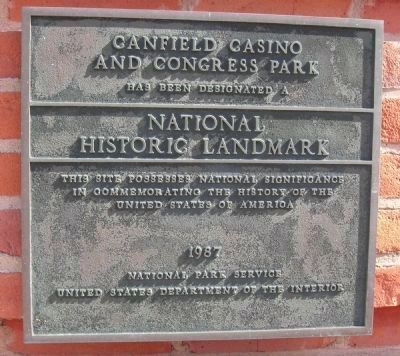
Photographed By Howard C. Ohlhous, April 15, 2009
2. Canfield Casino and Congress Park
National Historic Landmark
This site possesses national significance
in commemorating the history of the
United States of America
1987
National Park Service
United States Department of the Interior
Regarding Congress Park. The Casino was built in 1870 by John Morrissey, a retired prize fighter and politician raised in Troy, New York.
John Morrissey, (1831 - 1878) was an Irish born immigrant who settled in Troy, New York with his parents. Morrissey went on to became a proprietor of gambling houses in New York and Saratoga. He was the champion heavyweight bare knuckle boxer of the world in 1858, and later purchased the controlling interest in the Saratoga race course in 1863. He went on to politics and was elected as a Democrat to the Fortieth and Forty-first U.S. Congresses. He was also elected to the New York State Senate in 1875 and reelected in 1877.
The Canfield Casino was operated as a casino until 1907. Currently the Saratoga Springs History Museum is located in the Canfield Casino in Congress Park, off
Broadway in Saratoga Springs.
Also see . . .
1. The Saratoga Springs History Museum. Museum website homepage (Submitted on October 6, 2010, by Howard C. Ohlhous of Duanesburg, New York.)
2. John Morrissey. A Biographical Directory of the United States Congress website entry (Submitted on October 10, 2010, by Bill Pfingsten of Bel Air, Maryland.)
Additional keywords. Saratoga
Credits. This page was last revised on November 22, 2021. It was originally submitted on October 6, 2010, by Howard C. Ohlhous of Duanesburg, New York. This page has been viewed 1,752 times since then and 94 times this year. Photos: 1. submitted on February 21, 2011, by Howard C. Ohlhous of Duanesburg, New York. 2, 3, 4, 5, 6, 7, 8, 9. submitted on October 6, 2010, by Howard C. Ohlhous of Duanesburg, New York. 10, 11. submitted on February 21, 2011, by Howard C. Ohlhous of Duanesburg, New York. • Bill Pfingsten was the editor who published this page.
